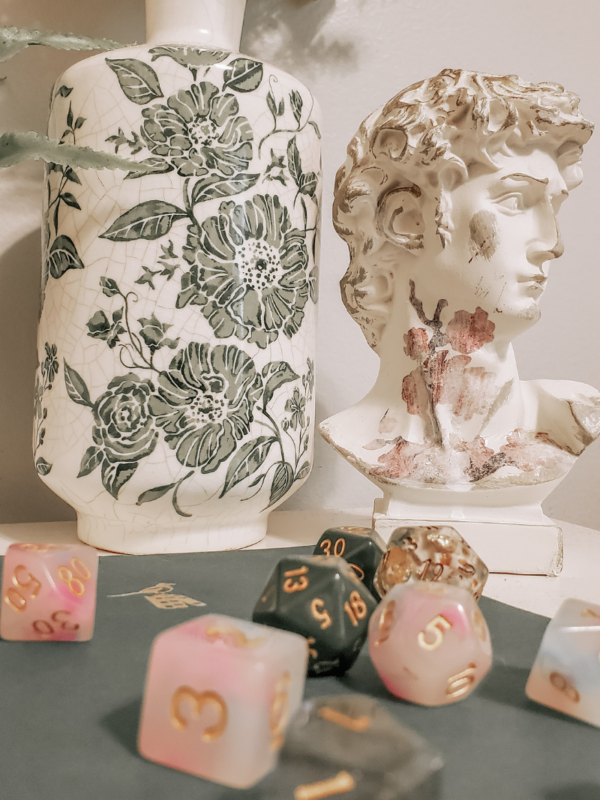Hello, everyone! I hope you’re having a lovely day. If you’ve seen any of my other content, you might know I’m a fan of both writing and table top role play games (ttrpgs). One thing they both have in common is character creation. I love getting to develop interesting characters for my stories and games. Over the years I’ve learned tips and tricks to make the process a bit easier. Today I want to share those tips with you to help you create compelling characters. Whether you’re a writer, a game master, or a player of ttrpgs, these techniques can help improve your process.
As a quick disclaimer, I want to say it’s okay if you don’t like all of these tips. Feel free to take what works for you and leave behind what doesn’t.
What is a Compelling Character?
Different creators might answer this question in slightly different ways, but I think there are a few universal truths about compelling characters. For starters, compelling characters are well fleshed out. It is obvious to the target audience, whether that’s a reader or a player at your D&D table, that the character is complete and not half-finished. Compelling characters also tend to have unique and consistent personalities and vibes. They are distinct from other characters in the story or game. In my experience, it can be hard to engage with a character who has no clear personality. Now that we’ve talked a bit about what compelling characters are, let’s go ahead and jump into the tips!
Take Advantage of Pinterest
The first step in my character creation process is to head to Pinterest. I find this is a good starting point because it gives me a visual guide I can refer back to if I get stuck or lose inspiration. This also helps me get a feel for the overall character vibes. Don’t worry too much about making this perfect. Later on, you can always edit your board if your vision for the character changes.
You can add anything you want to the board, but here are some things I typically add to mine:
- photos of people who look like my character
- quotes
- outfits the character might wear
- photos related to hobbies my character has
- landscape photos of where the character lives or spends time
If you want to see an example of a character Pinterest board, I’ll link to one I’ve created at the end of this post.
Have a Clear Character Vision
After coming up with a general character vibe, I like to delve a bit deeper into my character and come up with a more concrete concept. I like to ask myself a few questions about my character to get an idea of what really motivates them. This also helps me make sure my character vision is consistent. It’s important to be honest and strip away layers to get to the root of a character. For example, I might initially say a character is motivated by wanting to make their partner happy. However, after thinking a bit more I might realize the character is actually motivated by fear of being alone. This might cause them to be a people pleaser.
It’s important to remember good characters have both flaws and talents. If a character isn’t flawed, they won’t feel real, but if a character only ever makes mistakes it might be hard for others to enjoy them. Here are some questions I use to help develop my characters:
- What does my character want more than anything?
- Who or what would my character give up anything for?
- What is preventing my character from getting what they want?
- What is my character most afraid of?
- Who does my character most look up to?
- What are my character’s most important values?
Don’t be Afraid to be Goofy
I like to also come up with a bit of random or silly information about my characters. Real people have quirks. These aren’t flaws per se. Rather, they’re the unique habits and experiences that give us personality. Giving these to your characters helps them seem more realistic. For example, I have a character in one of my D&D games who always downs his coffee in one big drink and is known for researching instead of sleeping. I have a different character who only drinks tea mixed with alcohol and knits all her friends sweaters for their birthdays. This little tidbits tend to be the things others remember most about my characters.
There are so many different quirks you can give your characters. I like to pick things I think will make other people chuckle or go, “Wow, that’s unique.” Quirks will help set your character apart from other characters who might be similar, plus they’re just fun to come up with.
Closing Remarks
Thank you to everyone who read this post. I hope at least one of these tips will be useful to you in your character creation process. If you have any character creation tips of your own, feel free to leave a comment down below!
Have a Great Day,
Elliot J. West (he/they)


Leave a Reply